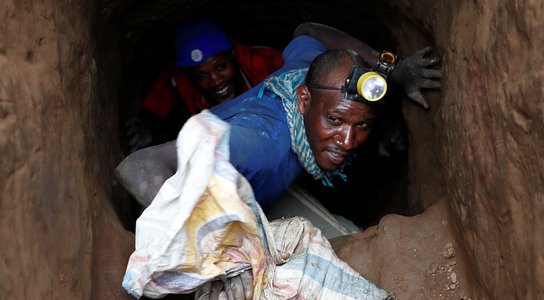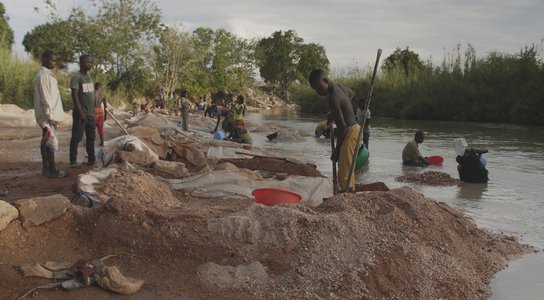In April 2022 we published the detailed report The ITSCI laundromat - How a due diligence scheme appears to launder conflict minerals, uncovering the serious failures of the ITSCI traceability and due diligence scheme in the Democratic Republic of Congo and Rwanda. In its public response ITSCI fails to adequately address any of the problems raised or necessary reforms.
ITSCI aims to avoid conflict financing and human rights abuses for tin, tantalum and tungsten supply chains, collectively known as 3T minerals. However, large amounts of minerals connected to armed conflict and child labour, as well as smuggled or trafficked minerals have been laundered through ITSCI’s supply chains, evidence suggests. It seems that ITSCI has turned a blind eye to these issues, that its controls don’t work and that its incident system is flawed, downplaying or ignoring incidents.
Instead of seizing the opportunity for self-critical reflection and seriously dealing with the allegations, ITSCI has published an aggressive response denying all allegations, often based on unsubstantial or poorly evidenced arguments, while leaving key questions unanswered. Its response contains many misleading and incorrect statements as well as crude misrepresentations of our claims.
ITSCI’s aggressive approach to any criticism is very disappointing but not new. In 2020 it tried to suppress critical information in a research paper of a postgraduate student at the university of Antwerp about ITSCI’s Rwanda programme by threatening to sue their university and request damages.
Our main allegations remain uncontradicted by
ITSCI’s response. In the attached
statement we reiterate the importance of our main findings and show that ITSCI
fails to contest them.
With ITSCI being unwilling to address its failures, companies sourcing minerals from ITSCI supply chains must now pressure ITSCI to act. ITSCI must reform its highly inadequate governance structure and publish mine-level data of tagged minerals.
Contamination of ITSCI supply chain with minerals from illicit sources and conflict minerals in South Kivu
We have documented that in two major mining areas in South Kivu around 90% and 80% of ITSCI-tagged 3T minerals respectively came from illicit sources in Q1 of 2021. In one case ITSCI writes that our data, which is based on detailed statistics from local tagging agents showing individual shipments, is wrong without revealing its own data. However, the DRC Ministry of Mines has released data that corroborates our data.
In the other case ITSCI tries to contest our findings by referring to minerals from unnamed mines in the Nzibira sector from which it claims the tagged minerals came. Undermining the multilaterally agreed approach of mine validation, ITSCI claims to have evaluated these mines itself. There does not seem to be any legal basis for ITSCI’s own evaluations which means that the minerals from these mines would have been illegally introduced in its supply chains.
Official records contradict ITSCI’s claim about where the minerals originated, as only the mines we have named in the report show up in official records. This suggests that this is an unsuccessful attempt by ITSCI to deflect from our finding that minerals connected to armed conflict and child labour were tagged by ITSCI, as multiple well-placed sources have confirmed to us. Conflict minerals entering ITSCI’s scheme at Nzibira have previously been documented by the UN Group of Experts as well as ITSCI’s own consultant, but ITSCI has downplayed or ignored these findings in its incident reporting instead of taking effective action.
The laundry of trafficked minerals in North Kivu
Apart from conflict minerals entering ITSCI’s supply chains, ITSCI has also laundered hundreds of tonnes of coltan that have been trafficked from the concession of non-ITSCI member SMB to the adjacent SAKIMA concession where ITSCI tags minerals. ITSCI claims that the apparent increase of tagged coltan on the SAKIMA concession by more than a factor of 8 between 2017 and 2021 is justified by a higher production of the mines on the SAKIMA concession. However, our estimated production of one of the apparently most productive mines is, based on a visit, less than a quarter of the volume of minerals ITSCI tagged. This confirms previous UN Group of Experts findings and furthermore, recent UN aerial imagery suggests that 3 other apparently highly productive mines were either abandoned or with just a few miners.
In an attempt to explain the discrepancy ITSCI refers to a re-demarcation of the SMB concession during which the company lost access to a river previously used to wash minerals to explain the simultaneous decrease of mineral production on this concession, suggesting that a lack of water would strongly reduce the productivity of SMB’s mines. However, this claim proves to be baseless due to a North Kivu Ministry of Mines mission that found almost 400 water points on the SMB concession and furthermore the monthly production data remained stable after SMB lost access to that river.
ITSCI insider John Crawley who after a dispute with SMB lost access to that company’s minerals in 2017 is the chairman of the company buying most of these trafficked minerals, suggesting a grave conflict of interest.
In its response ITSCI claims that we are biased in favour of SMB despite the fact thatwe heavily criticised SMB in the same report with regard to the deadly violence committed by its guards.
Laundering of smuggled minerals in Rwanda
We reported that industry experts estimated Rwanda’s 3T production to be only a fraction of the country’s exports of these minerals and that a Pact manager, who played a key role in setting the ITSCI system up in Rwanda, estimates fraudulent tagging of smuggled minerals through the ITSCI scheme to account for 90% of exported 3T minerals from Rwanda during the first years after its set up. ITSCI wrongly claims that these assertions have been dismissed by a World Bank court and wrongly suggests that the estimations of Rwanda’s 3T production have ignored minerals from mixed production.
Neither ITSCI nor the Tantalum-Niobium
International Study Center (TIC) have reacted to the statement by Kyocera AVX, one
of the main manufacturers of electronic components, whose programme determining
the origin of minerals seemed to indicate that minerals of the main exporter of
ITSCI’s 3T minerals were smuggled, a finding the company reportedly confronted
TIC with in 2016.
Companies must pressure ITSCI to overhaul its scheme
The troubling conflict of interest at the heart of the ITSCI scheme is behind ITSCI’s ignorance of these massive contamination problems and its failed due diligence. ITSCI is supposed to stop problematic minerals from entering international markets while at the same time representing those that profit from buying and then selling these minerals. ITSCI’s governance structures with only two representatives, one from the TIC and the other from the International Tin Association (ITA) with the latter at the same time overseeing the ITSCI programme, are highly inadequate and have seemingly enabled the abuse of the ITSCI programme by some powerful members for their purposes.
For its members and downstream companies sourcing from ITSCI smelters, ITSCI’s categoric denial must be seen as a clear sign that ITSCI will continue to ignore evidence of laundered minerals. With ITSCI turning a blind eye, it is up to the involved key stakeholders to act now in a meaningful way.
The Responsible Minerals Initiative has an important role to play. We welcome that it has removed ITSCI from its list of recognised “upstream assurance mechanisms”. This is an important signal but more needs to be done.
Any company that is serious about responsibly sourcing minerals and that is sourcing minerals from ITSCI supply chains must now pressure ITSCI to overhaul its governance and be more transparent.
To include more and in particular independent persons on its governance committee and to publish mine-level data of tagged minerals would be important steps for ITSCI to become a reliable scheme.

